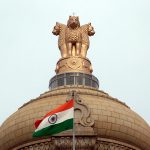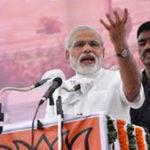- The “South Asia satellite” or the GSAT-09 being built by India for use by countries of the South Asian Association for Regional Cooperation (SAARC) region will be launched on May 5.
- It was announced by PM Modi during the 2014 SAARC summit in Nepal and all SAARC countries have since joined it except Pakistan.
Also Read: Satellites and their Orbits
- Pakistan opted out from the proposed Saarc satellite suggesting that it ”has its own space program”. So, the project was renamed as South Asia Satellite instead of the earlier SAARC satellite.
- GSAT-9 is a Geostationary Communication Satellite with the objective to provide various communication applications in Ku-band with coverage over South Asian countries.
- The satellite weighs 2,230 kg and costs around Rs. 235 crore which will be borne by the Government of India.
- It has 12 Ku- band transponders which are devices used for forming a communication channel with radio signals. Each nation will get access to at least one transponder, through which they could beam their own programming. Each nation has to develop its own ground infrastructure, but India is willing to provide assistance.
Also Read: PSLV C-35: Longest Mission Ever- Its different!!
- The GSLV-F09 is the 11th flight of the GSLV. It is also the its fourth consecutive flight with the indigenous Cryogenic Upper Stage (CUS) engine.
- Shape: It is cuboid in shape and built around a central cylinder.
- Launch Vehicle: GSLV Mk-ll
- Beneficiary countries: Nepal, Bhutan, Bangladesh, Afghanistan, Sri Lanka and Maldives.
- Mission life: over 12 years
- Applications: telecommunications, disaster relief, DTH, tele-education, telemedicine and disaster management support.
- It can also provide secure hotlines among the participating nations, which will be useful in case of management of disasters like earthquakes, cyclones, floods and tsunamis.
Read in Hindi: दक्षिण एशिया सैटेलाइट के बारे में आपके जानने योग्य तथ्य











